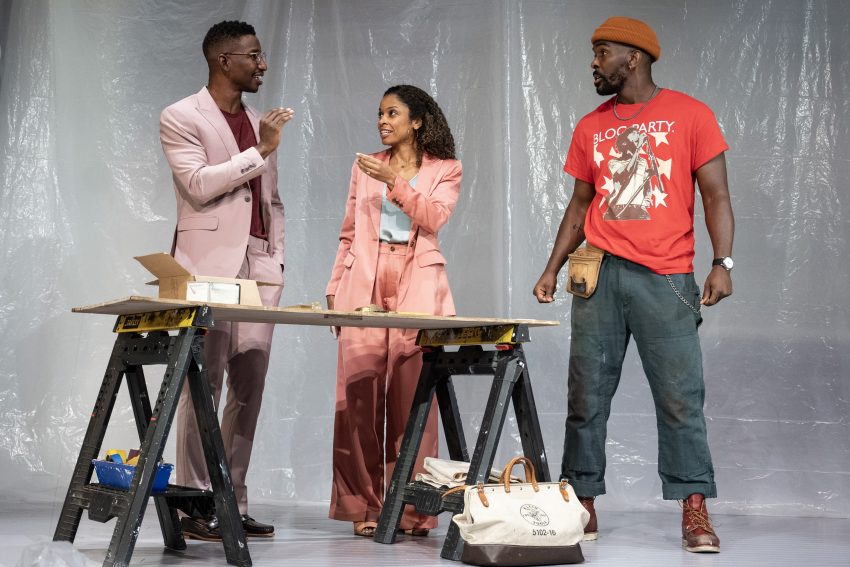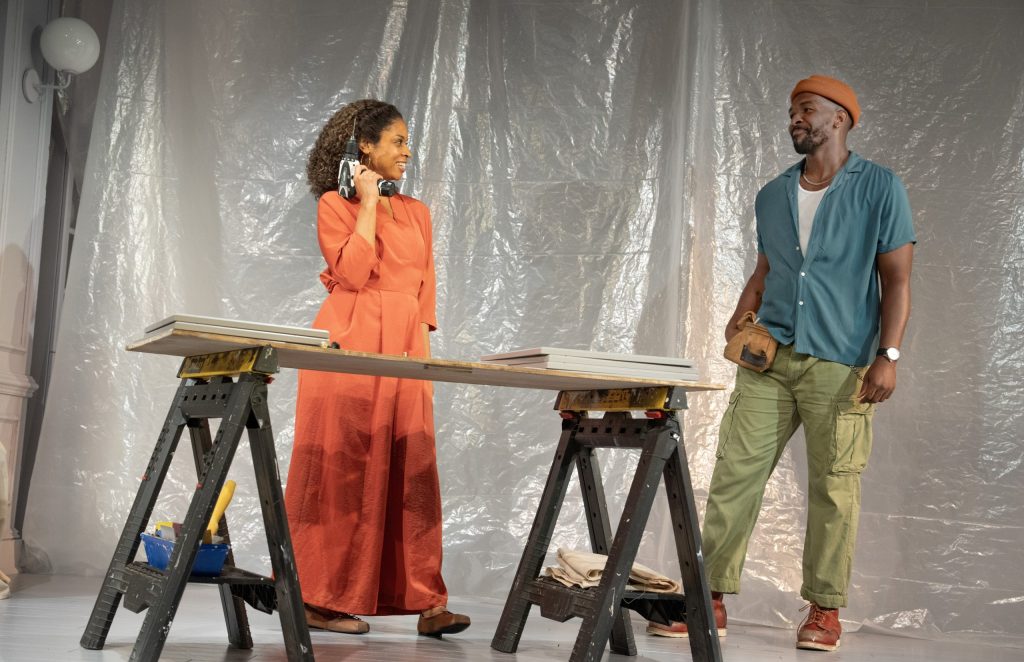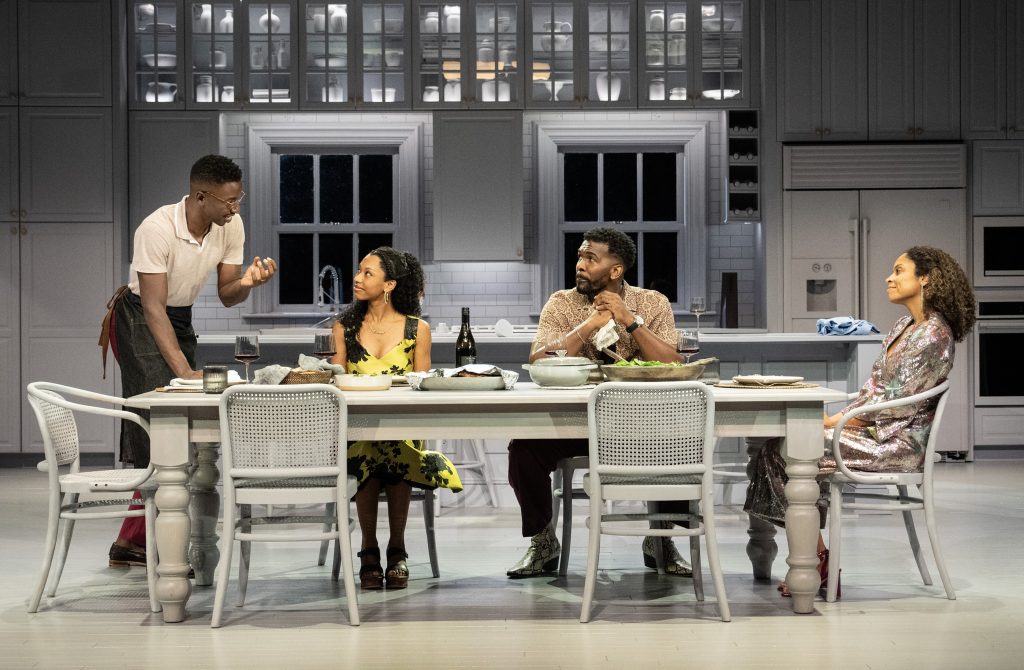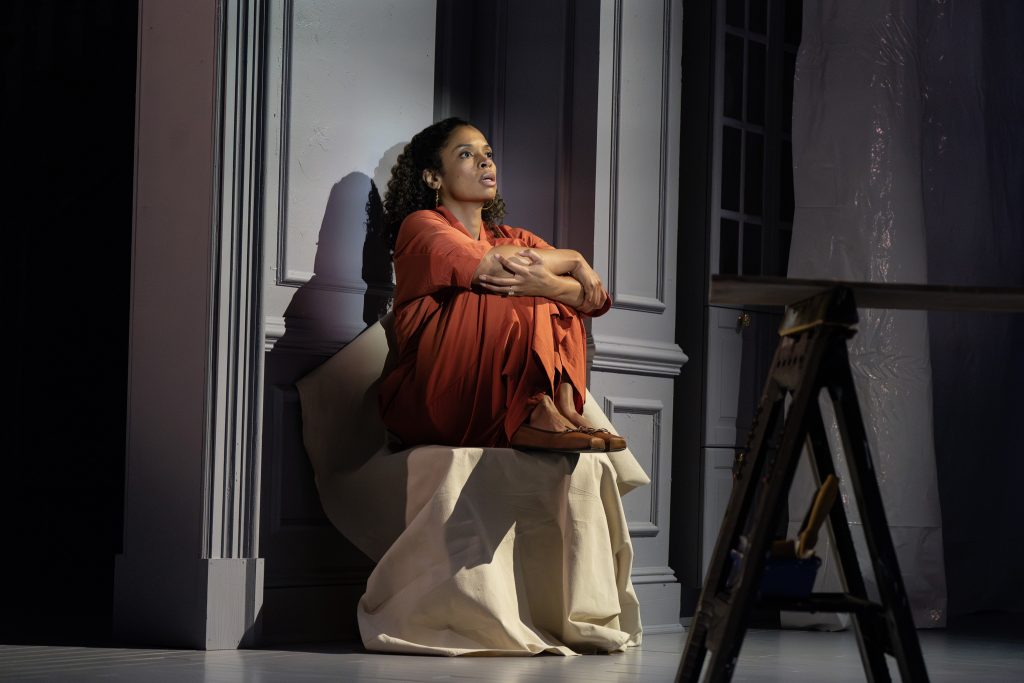
“Good Bones”: A Gripping Battle of Haves vs. Have-Nots—at The Public
Millennial Notes
James Ijames Plumbs the Depths & Despair of Gentrification
by David Moore
James Ijames’ “Good Bones” delves into gentrification, class struggle, and the malicious role of technology in reshaping old neighborhoods.
Pulitzer Prize-winning playwright James Ijames masterfully explores the divide between new wealth buying up Dunbar Gardens—which stands for many urban communities. The play highlights the tension between long-time renters and tech-savvy gentrifiers, a familiar story in New York, San Francisco, London . . .
Aisha (Susan Kelechi Watson), who grew up there, and her wealthy husband Travis (Mamoudou Athie) return to Dunbar Gardens. Once home to Black civil rights heroes, the neighborhood’s grand houses are now crumbling. Aisha and Travis, both successful professionals, buy a run-down Victorian house to renovate and make their home. The house, once beautiful, now sits dilapidated. Yet, there’s something alluring about its history and its potential.

Local craftsman Earl (Khris Davis), who grew up playing in this very house, feels a deep connection. His memories and craftsmanship contrast sharply with the sterile “Millennial Gray” of Aisha and Travis’ kitchen, refashioned in gentrification’s cookie-cutter aesthetic. At first covered by construction site plastic, the set is revealed, slowly opening to an enviable but sterile modern kitchen.
The tension rises when Aisha and Travis argue over Earl’s handmade cabinet handles. The conflict isn’t just about the house remodeling, it’s about the community’s fading identity. Earl’s work represents more than just a job; it’s a link to a disappearing way of life. Gentrification isn’t just about property, it’s personal.
The complex dynamic between Aisha and Earl, while hinting at romantic tension, is more about social class than desire. Aisha now belongs to the ownership class, managing her life through iPad and Alexa. But Earl rejects her tech-driven life. As Earl puts it: “I ain’t sharecropping for Mark Zuckerberg.”
Playwright Ijames brilliantly uses technology as a metaphor for the class divide. Aisha and Travis rely on AI assistance and social media to navigate their lives; while Earl, holding onto his craft, uses a flip phone and works with his hands. His rejection of technology serves as a condemnation of the forces that are erasing his neighborhood’s character.

The clash between these worlds intensifies when Travis, disturbed by loud music outside, uses an app to call the police. This action horrifies Aisha, who lives by the unspoken rule: “Don’t call the cops on your own people!” Yet even Travis isn’t immune to systemic racism, having faced police brutality himself—a reminder that wealth does not inoculate against racism.
“Good Bones” ultimately raises the question: Who has the “Good Bones” in this story? Is it the house Aisha and Travis are renovating, or is it Earl, who remains steadfast in his love for his community and craft?
The play leaves us pondering whether a neighborhood’s soul can survive the relentless march of gentrification. While Aisha wrestles with her place in the world, Earl dreams of a community that still feels like home for everyone.

“Good Bones” by James Ijames, directed by Saheem Ali, scenic design by Maruti Evans, costumes by Dana Botez, lighting by Barbara Samuels, at The Public Theater, New York City. Info: publictheater.org – to October 27, 2024.
Cast: Aaron J. Anderson, Mamoudou Athie, Khris Davis, Téa Guarino, Sabrina K. Victor, and Susan Kelechi Watson.
Banner photo: Mamoudou Athie, Susan Kelechi Watson, and Khris Davis. Photos by Joan Marcus